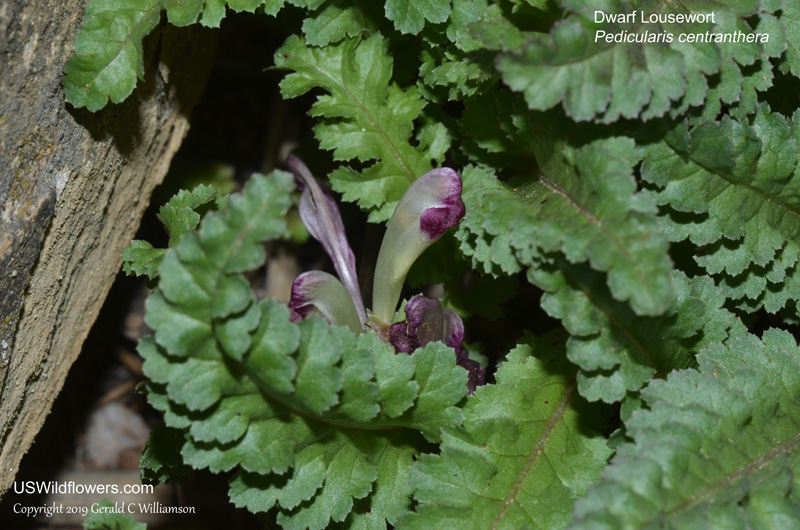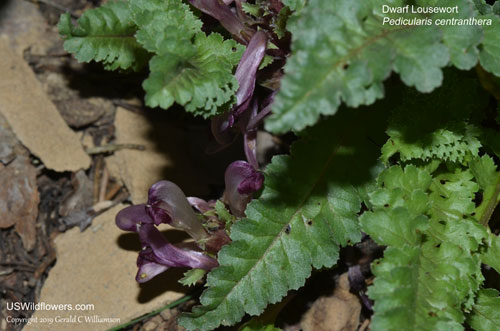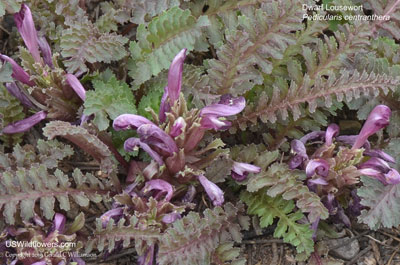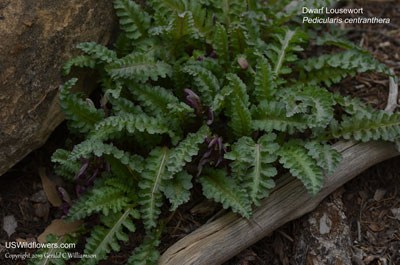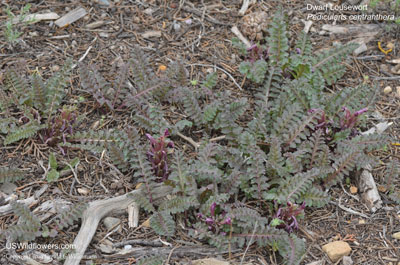Wildflowers of the United States | |||||||||||||
| |||||||||||||
Pedicularis centranthera - Dwarf Lousewort, Spring Lousewort, Great Basin Lousewort, Wood Betony. | Pedicularis - Lousewort - is a large genus of around 600 hemiparasitic species worldwide, primarily in the temperate to arctic regions of the northern hemisphere, but also found in South America. Nearly half of the species are endemic to China, but there are about 40 species found in North America. There is at least one species found in each of the United States except Hawaii. Pedicularis and several other genera were moved from Scrophulariaceae into Orobanchaceae by the Angiosperm Phylogeny Group in the early 21st century (APG II). The Lousewort genus common name comes from the old perception that cattle and other livestock which browsed on the plants were more susceptible to lice infestation. This may have been true, but likely not due to lice having any affinity to the plant, but because the livestock would eat Pedicularis on when most other plants were eaten to the ground, so the animals had their muzzles on the soil attempting to find fodder. Pedicularis centranthera is a plant primarily of the southwestern United States, usually found in sagebrush habitat at elevations above 4000'. It ranges as far north as southeastern Oregon, and is also found in a single county in the northeastern part of California. The photos on this page were made in southwestern Colorado at an elevation of about 6800'. Found in: AZ, CA, CO, NM, NV, OR, UT  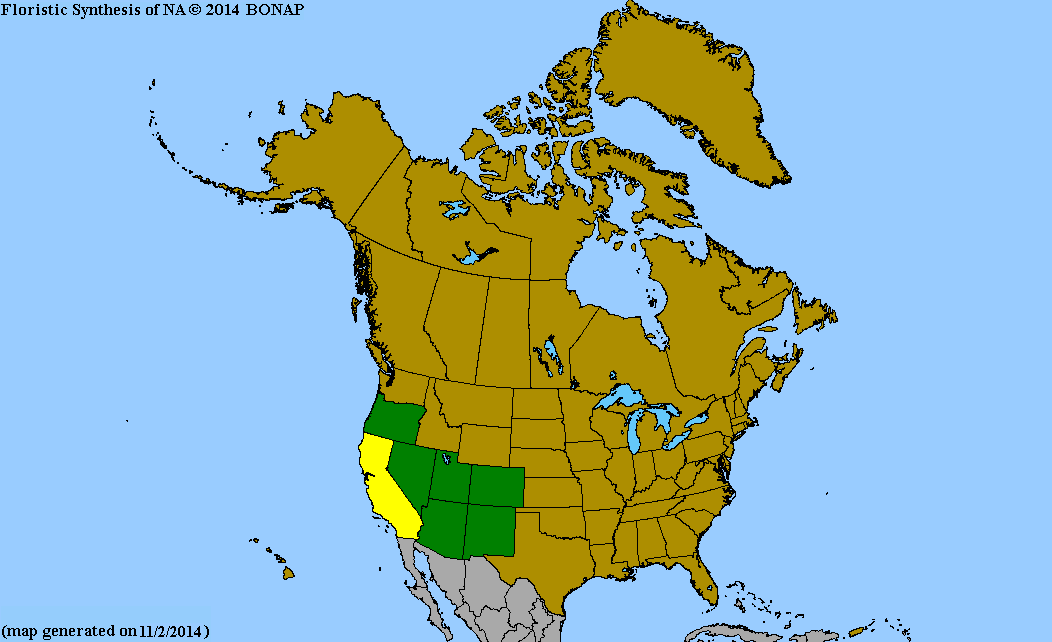 Map courtesy of The Biota of North America Program. Map color key Search Our Database: Enter any portion of the Scientific, Common Name, or both. Do a general Google search of the entire site: #ad #ad
| #ad
| | ||||||||||
|
Commercial / Cookie Notice Looking for Wildflowers for a specific state? Check here: | |||||||||||||
|
All content except USDA Plants Database map Copyright Gerald C. Williamson 2025 | |||||||||||||
Code Update 20230302

